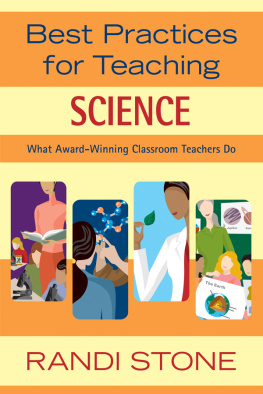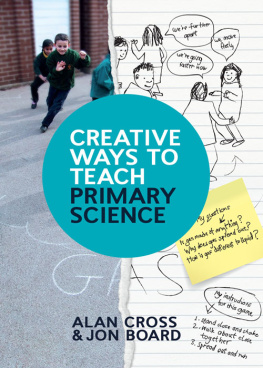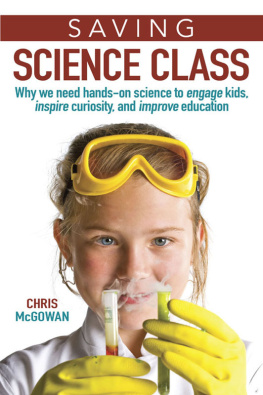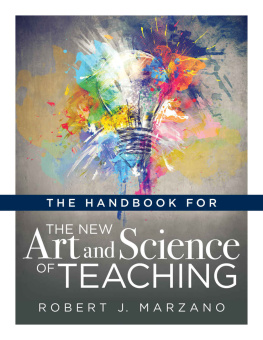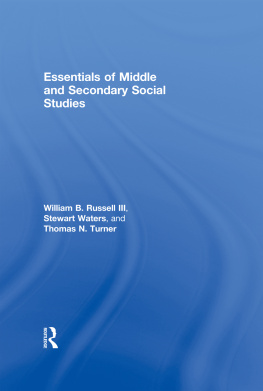Your
SCIENCE
CLASSROOM
We would like to dedicate this book to our children, Ginny, Kristin, and Michael, for being our first students, and to all the students we have learned from and whom we have taught. They inspired us to be better science teachers than we ever thought we could be.
Your
SCIENCE
CLASSROOM
Becoming an Elementary/Middle School Science Teacher
M. Jenice Goldston
The University of Alabama
Laura Downey
Kansas Association for conservation and Environmental Education


FOR INFORMATION:
SAGE Publications, Inc.
2455 Teller Road
Thousand Oaks, California 91320
E-mail:
SAGE Publications Ltd.
1 Olivers Yard
55 City Road
London EC1Y 1SP
United Kingdom
SAGE Publications India Pvt. Ltd.
B 1/I 1 Mohan Cooperative Industrial Area
Mathura Road, New Delhi 110 044
India
SAGE Publications Asia-Pacific Pte. Ltd.
33 Pekin Street #02-01
Far East Square
Singapore 048763
Acquisitions Editor: Diane McDaniel
Assistant Editor: Rachael Leblond
Editorial Assistant: Megan Ann Koraly
Production Editor: Eric Garner
Copy Editor: Alison Hope
Typesetter: C&M Digitals (P) Ltd.
Proofreader: Joyce Li
Indexer: Wendy Allex
Cover Designer: Karine Hovsepian
Marketing Manager: Katharine Winter
Permissions Editor: Adele Hutchinson
Copyright 2013 by SAGE Publications, Inc.
All rights reserved. No part of this book may be reproduced or utilized in any form or by any means, electronic or mechanical, including photocopying, recording, or by any information storage and retrieval system, without permission in writing from the publisher.
Printed in the United States of America
Library of Congress Cataloging-in-Publication Data
Goldston, M. Jenice
Your science classroom: becoming an elementary/middle school science teacher / M. Jenice Goldston, Laura Downey.
p. cm.
Includes bibliographical references and index.
ISBN 978-1-4129-7522-3 (pbk.)
1. ScienceStudy and teaching (Elementary)United States. 2. ScienceStudy and teaching (Middle school)United States. 3. Science teachersTraining ofUnited States. I. Downey, Laura. II. Title.
LB1585.3.G65
2013 372.35044dc23 2011045609
This book is printed on acid-free paper.
12 13 14 15 16 10 9 8 7 6 5 4 3 2 1
BRIEF CONTENTS
DETAILED CONTENTS
PREFACE
When you think about teaching science in your classroom for the first time with twenty or more eager children looking at you ready to begin, how do you feel? Excited? Anxious? Happy? Expectant? Worried? Scared? Well, a great deal of how you feel about science and teaching science may be attributed to how you have experienced science in school and to some degree how you have been prepared to teach science. This book, designed for K8 science methods instruction, is for teachers who desire to use inquiry in their classrooms. This textbook is written in a manner that invites you, the K8 teacher, into science classrooms where inquiry experiences thrive while igniting student learning and science teacher enthusiasm.
Your Science Classroom: Becoming an Elementary or Middle School Science Teacher represents what we, as teachers of science, have learned through many years of classroom experiences with elementary and middle school students in rural and urban, public and private settings. It also represents thirty years of our experiences and passion for teaching science to graduates and undergraduates at the university level. As such, our purpose is to provide a practical science methods textbook that contains essential knowledge and skills that teachers need to begin to teach science to K8 students using hands-on, minds-on approaches. Conceptually, our book emphasizes the importance of teachers as reflective, knowledgeable facilitators of standards-based, inquiry-based, constructivist practices. Along these lines, it also provides a practical presentation of relevant knowledge in the field. What makes Your Science Classroom: Becoming an Elementary or Middle School Science Teacher different from other science methods textbooks is that the chapters are actually designed using an inquiry approach, often referred to as the 5E inquiry instructional model. The stages of the 5E inquiry model have been modified slightly from its original intent for use in a book; by using this modified version, we provide the reader with multiple exposures to each phase of the instructional model through reflections, readings, and authentic activities embedded within each chapter. Our aim is to uncover key areas of science methods content well, without trying to cover everything.
It may be helpful to you to know a bit more about the 5E model used in the chapters. This model comprises five stages: E ngage, E xplore, E xplain, E laborate, and E valuate. The following are brief descriptions of these stages:
- Engage : Focuses on eliciting what the learners already know about the topic and invites inquiry. A variety of approaches can be used to accomplish these goals. These may include simple questions and KWL charts, to questions, story prompts, discrepant events, or other activities that are more sophisticated.
- Explore : Uses a variety of investigative and inquiry experiences that actively involve students with science concepts and processes of science.
- Explain : Develops students understanding of scientific concepts and processes through teacher-facilitated questioning that draws on the inquiry activities. Labels and terminology associated with science concepts are introduced during this stage.
- Elaborate : Applies the newly acquired science concepts and processes in new situations.
- Evaluate : Examines through a purposefully designed task students learning of the objective(s) taught.
Because the 5E inquiry instructional model is intended to be an interactive, dynamic model where students explore science phenomena firsthand, its use has been slightly adjusted here to fit the constraints of a textbook. In particular, the explain stage for each chapter is informational and has been modified from the 5E model simply because facilitating an interactive question-and-answer session about the explore activity and the associated science concepts is limited by the book format. However, if the explore activity becomes part of actual class instruction you may see the explain stage come to life as it is intended. Use of the 5E inquiry lesson model as a way of uncovering the information in this text will offer multiple opportunities for the reader to examine its format and the various strategies depicted in each of the stages. Each chapter invites the reader to participate in various tasks or activities as part of the 5E inquiry model. We encourage you to complete these active learning experiences to gain knowledge of each stage and thus experience firsthand a useful lesson plan model for inquiry in your science classroom. Each chapter gives you multiple opportunities to examine each phase of the 5E format, and to consider how it translates into science classroom inquiries with K8 students.
Organization of the Text
Part I: The Nature of Science
As part of becoming an effective science teacher, you must have knowledge of science, children as diverse learners, and pedagogical approaches for teaching science. addresses the National Science Education Standards and scientific literacy as a goal for all students. The chapter also provides background knowledge of science as a contemporary enterprise that is closely interwoven with technology. Recognizing and understanding the relationship between science and technology in current society is important to all students as they develop scientific literacy.
Next page

